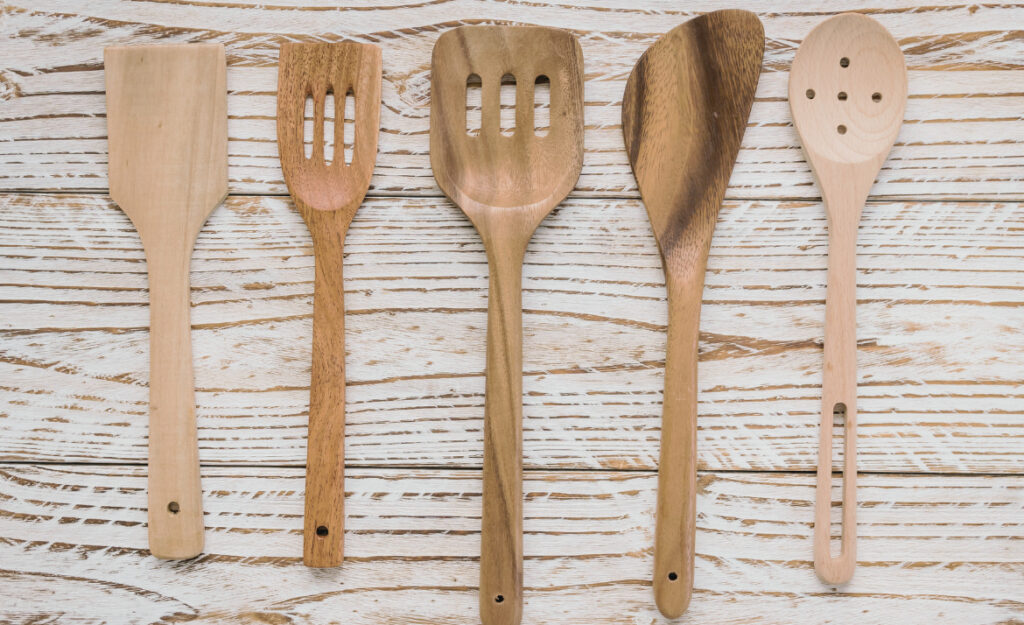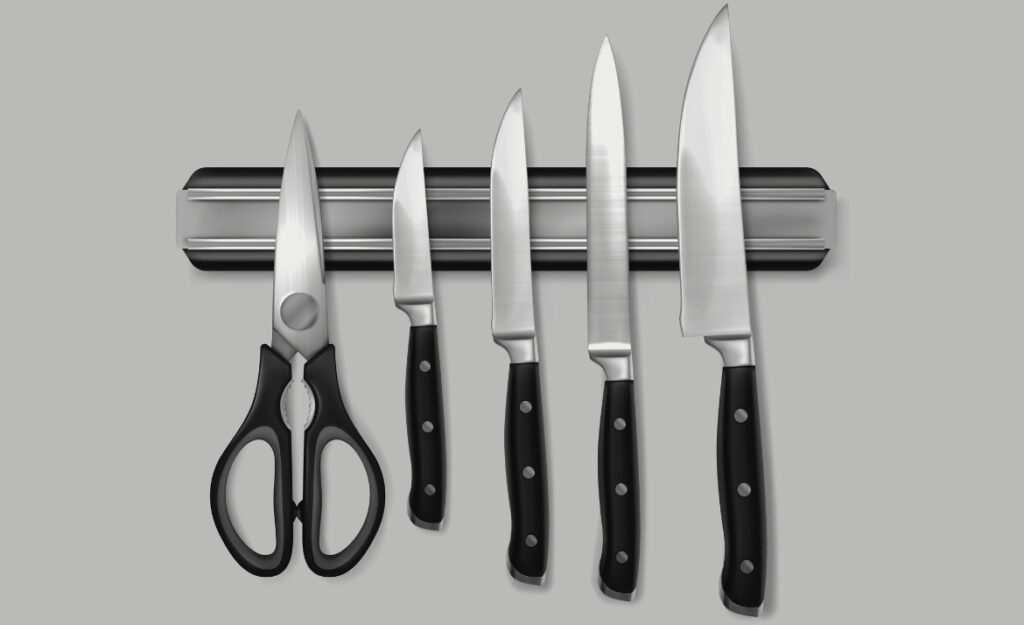
A spatula might seem like a simple kitchen tool, but anyone who cooks knows how essential it is. Apply spatula care tips mindfully, and you’ll notice how meals go from frustrating to effortless. That flexibility, after all, is what makes them irreplaceable for flipping, stirring, and scraping every last bit.
Seasoned chefs and beginners alike often underestimate regular maintenance. Spatulas—whether silicone, metal, or wood—take a beating with every meal. Overlooking spatula care tips can lead to warped, brittle, or stained utensils that impact food quality and kitchen safety.
Simple changes make a huge difference. This article explores spatula care tips by breaking down cleaning, storage, usage, and timely replacement. Stick around to discover practical steps for extending your spatula’s lifespan without any guesswork.
Extend Your Spatula’s Life with Cleaning Routines That Work
Consistent and effective cleaning is the fastest way to keep spatulas looking and performing their best. Rinsing immediately after use prevents stubborn stains and preserves flexibility, a foundation of great spatula care tips.
Neglecting routine cleaning causes residue to build up, especially if you use spatulas for sticky or oily foods. Quick rinsing under warm water, followed by washing with gentle soap, creates better results.
Scrubbing Techniques for Silicone Blades
Silicone spatulas require a soft sponge or brush to reach every corner. Avoid abrasive scrubbers, as they create micro-scratches that trap food particles and dull the tool. Gently rotate the spatula as you clean for complete coverage.
Start at the end that contacts food most, working your way down the handle. Ensure the utensil air-dries afterward. Excess moisture can cause even silicone handles to develop grime and a slippery texture if tossed into a crowded utensil jar.
When dealing with tenacious sauces or grease, fill a bowl with hot water and add a splash of dish soap. Submerge your spatula for a few minutes. After soaking, stains lift easily with minimal scrubbing, extending spatula life considerably.
Caring for Wooden Handles and Edges
Wooden-handled spatulas have a classic look but demand extra care. Immediately after use, wipe food residue off with a damp cloth to prevent absorption. Never leave wooden parts submerged, as swelling and cracks develop quickly with soaking.
If the handle feels dry or rough, work a drop of food-safe mineral oil across the grain monthly. This treatment keeps wood flexible and moisture-resistant. Always air-dry wooden spatulas upright, ensuring airflow on all sides.
Inspect wooden spatulas frequently for splinters or discoloration. If you see either, sand lightly with fine-grit sandpaper and re-oil before the next use. Spotting early signs of wear means you can prevent breakage or contamination.
| Spatula Material | Cleaning Method | Risk of Damage | Takeaway Action |
|---|---|---|---|
| Silicone | Soap & soft sponge | Low unless abraded | Rinse and air-dry quickly |
| Nylon | Warm water, avoid boiling | Can warp under high heat | Use below 400°F, no dishwasher |
| Wood | Wipe, never soak | Swelling, cracks if soaked | Monthly oil, upright drying |
| Stainless Steel | Dishwasher-safe | Rare, but can discolor | Polish with cloth as needed |
| Rubber | Handwash, no harsh cleaners | Hardens with age or heat | Replace if rigid or cracked |
Smart Storage Solutions Keep Spatulas Ready for Action
Where you store a spatula matters as much as how you clean it. Storing spatulas upright in a ventilated holder reduces pressure points that cause warping and keeps them dry between uses—top-tier spatula care tips you can act on today.
Piling spatulas under other bulky utensils or compressing them into a drawer causes bends and weakens flexibility. Swap out cluttered drawers for dedicated holders or hangers to avoid long-term damage.
Choosing Holders or Racks
Look for a wide, open container tall enough for spatulas to stand upright. If you prefer wall-mounted racks, position them away from stove heat so the blades don’t deform over time. Silicone spatulas, especially, retain their shape better this way.
- Organize by material: Place wooden spatulas with wooden spoons to avoid transferred moisture or odors, keeping wood fresher and reducing bacterial growth.
- Position near prep areas: Storing spatulas next to the main cutting board cuts down on walking back and forth, making food prep quicker and more efficient.
- Use divider inserts: Drawer organizers prevent spatulas from getting wedged under heavier utensils, maintaining flexibility and minimizing scratches or dents.
- Hang on hooks: Hanging releases pressure from spatula blades, preserving their original shape and preventing the warping that stacked storage can cause.
- Rotate regularly: Every few weeks, shift the order of utensils to promote even wear and spot signs of damage early, extending your spatula’s lifespan.
Dedicated racks and thoughtful placement mean less frequent replacements, ultimately saving money and frustration in the kitchen. These spatula care tips build good habits for all utensil storage.
Preventing Heat and Sun Exposure
Direct heat, including that from a hot stove, softens or discolors spatulas over time. Installing racks several feet from heat sources ensures durability. Sunlight can weaken certain materials, especially colored silicone, so keep spatulas away from kitchen windows.
- Shield from sunlight: Store spatulas in shaded spots; fading signals lost flexibility and possible micro-cracking of silicone or rubber.
- Distance from oven or toaster: Place containers on the counter’s cooler side to avoid warping from rising heat during cooking.
- Insist on cool, dry storage: Moisture increases the risk of bacterial growth, especially in wooden handles. Choose ventilated containers every time.
- Check cabinet temperature: Under-counter drawers nearest the dishwasher get warm and humid, ideal conditions for bacteria and warp risk.
- Inspect location quarterly: Every season, review storage areas for evidence of heat damage or mold, and upgrade as needed for top-notch spatula care tips.
Keep temperature and humidity levels low for spatula storage, as this minimizes damage to hand grips and blades alike. Consistency pays off in ease of use and utensil longevity.
Realistic Usage Habits Make Your Spatula Last Longer
Day-to-day usage patterns affect how flexible and sturdy a spatula stays. Using spatula care tips during meal prep means minding which pan or pot matches your spatula type and never reaching for the same one without checking its condition.
Test their give every week by gently bending the blade. If it seems stiff or cracks form, swap it out before the next cooking adventure to avoid kitchen mishaps.
Rotating Between Multiple Spatulas
Consider using a “rotation” strategy as you might with favorite sneakers. Assign different spatulas to specific tasks: one for scraping, one for flipping, and one for baking, for instance. This way, no single utensil bears all the stress.
Label or color-code spatulas if members of your household use them frequently. This avoids mixed-use accidents and extends the working life of each tool. Spreading out daily wear means fewer replacements throughout the year.
Tracking rotation pays off. A sticky or scorched spatula gets set aside rather than pressed back into service, encouraging proper cleaning before reuse. Consistent application of spatula care tips keeps blades sharp and handles intact.
Avoiding Common Damage Traps
Never use a silicone or rubber spatula to scrape burnt-on bits from a metal pan—the edge can split. When you need heavy-duty scraping, a dedicated metal spatula or scraper does the job. Save the flexible tools for folding batters, stirring eggs, or gentle mixing.
Be wary of resting spatulas on a hot pan’s rim. The heat migrates up the handle or melts coated surfaces. Instead, set the spatula on a heat-resistant spoon rest away from open flames or hot burners.
Following these spatula care tips creates habits that protect hands as well as utensils. Each tool lasts longer and picks up fewer stains when matched to the right cooking job every time.
Recognize Signs That Call for Spatula Replacement
Catching early warning signs ensures you don’t compromise meals or safety. Classic spatula care tips include inspecting for edge cracks, overly soft spots, or discoloration that won’t wash away no matter how thoroughly you clean.
Notice if your spatula feels different—gritty silicone, splintery wood, or a handle that spins or creaks. Each cue signals time for a review and possible replacement.
Knowing Material Lifespans
Silicone spatulas generally offer several years of reliable use, provided they’re never cleaned with abrasive pads. Nylon options tend to lose flexibility at the edges sooner, and wood responds dramatically to humidity and time.
If a spatula smells sour or has dark stains, bacteria may have penetrated the material. Even frequent cleaning can’t always rescue compromised tools. Swap for a new model before returning it to daily use, applying spatula care tips to the next utensil.
Metal spatulas resist most stains but can develop loose rivets or bent blades. Replacing them protects pan surfaces and ensures a secure grip for every flip. Don’t gamble with hand-injuring breaks.
Safe Disposal and Eco-Friendly Options
Segregate spatulas at the end of their lifespan: recycle metal and donate unblemished wooden handles for crafts when possible. Always wrap sharp edges if discarding in household trash to prevent injuries during collection.
Look for eco-friendly spatula brands made from recycled or biodegradable materials. When you’re due for an upgrade, these choices support sustainability while keeping performance high. Savvy shoppers combine utility with environmental responsibility.
Research local recycling options for silicone and plastics to avoid landfill waste. This final act closes the loop on healthy spatula care tips from purchase to disposal, protecting both kitchen and planet.
Conclusion: Putting Spatula Care Tips into Daily Practice
Regular maintenance, thoughtful storage, and mindful usage habits extend spatula lifespans and keep performance reliable every meal. Small steps add up—quick washes, upright storage, and consistent inspection transform routine kitchen work into simple utensil longevity wins.
Little changes, like rotating spatulas or syncing cleaning with meal cleanup, protect your investment and ensure safer food prep. By applying these spatula care tips, home cooks keep their kitchens efficient and avoid last-minute tool failures.
Easily adopt a few routines today—whether it’s wiping wood, hanging silicone, or rotating favorite tools. Well-cared-for spatulas lead to frustration-free cooking while saving money and reducing waste over the long haul.
Frequently Asked Questions
How often should I replace my spatula?
Replace silicone or nylon spatulas every two to three years, unless you notice cracks, hardened edges, or persistent stains. Wooden spatulas last if cared for, but swap out any splintering or warped handles immediately.
Can spatulas go in the dishwasher?
Many stainless or silicone spatulas are labeled dishwasher-safe, but repeated dishwasher cycles may weaken flexibility over time. For optimal results and longevity, hand washing with mild soap and air-drying is recommended for all spatulas.
What’s the best way to store spatulas?
Upright storage in ventilated holders or hanging racks preserves flexibility and prevents awkward bends. Avoid crowded utensil drawers, which cause compression and uneven wear. Keep spatulas away from direct heat sources for long-lasting performance.
Is it safe to use a spatula with food stains?
If regular cleaning doesn’t remove food stains or the spatula smells off, bacteria may be present in porous handles or blades. For food safety, switch to a clean spatula and consider replacing any utensil with persistent discoloration.
What’s the difference between silicone and rubber spatulas?
Silicone withstands higher heat and retains flexibility longer, making it the better choice for most cooking. Rubber spatulas can harden and crack with age or heat. Choose based on typical temperatures and match care routines to each material.



